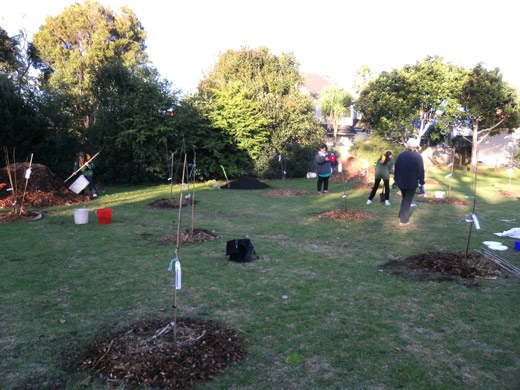Food Forests represent man-made food-producing ecosystems, which utilise vertical integration of mostly woody perennial plants sharing a common canopy.
This allows the purposeful utilisation of three-dimensional space above and below ground. In temperate zones the sharing of light and root-space has to be carefully managed to retain productive elements.
Trees both dominant, and sub-dominant, will produce the taller tiers of canopy, shrubs, climbers and perennials share the lower strata, while annuals and ground cover species will provide living ground cover, where conditions allow.
More and more people live in urban environments than ever before. The individual space varies but is generally shrinking.
The traditional New Zealand home foot-print quarter acre is now more likely a portion of that. Public reserves and parks are less and less utilised with various forms of transport opening further realms for leisure and recreation.
Also public spaces often have not had soil-enhancing treatments. The maintenance of lawns and purely ornamental trees and shrubs does not produce food. Local initiatives are under-way world-wide where communities are reclaiming or restoring public land for productive purposes.
Urban orchards can bring the young and old together and communities find purpose in getting together for mutual benefit.
Relevance to locality, history, diversity and seasonality should be observed.

This describes a situation that combines small spaces with great expectations. We are good at designing functional and productive human habitats that are also beautiful and aesthetically pleasing.
Busy people with little or no time want low-maintenance environments to relax in and enjoy: This often means an edible landscape which incorporates smart and space-saving design features.
Year-round food-supply is possible in these latitudes! Target land area ranges from 1000m2 to 4000m2.